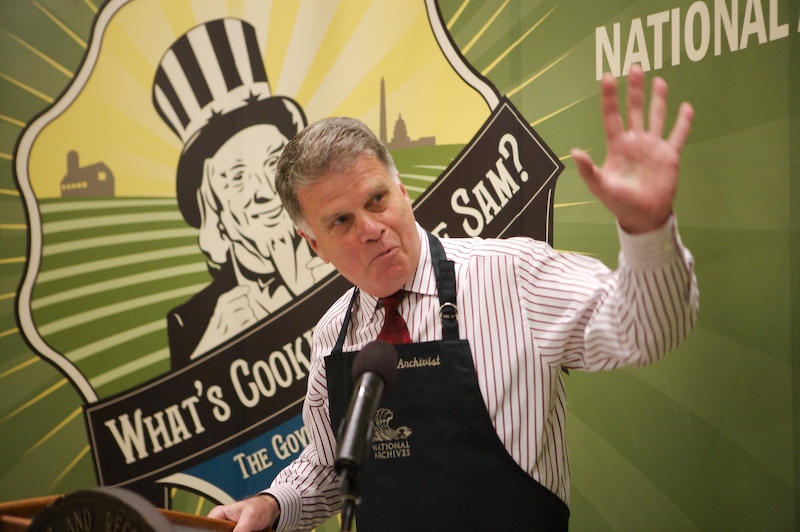Archive for June, 2011
Written on: June 27, 2011 | 8 Comments
Having grown up on the public service side of libraries, I am always on the lookout for examples of organizations and companies who can articulate a service culture. My latest discovery is Zappos.com, founded in 1999 “…with the goal of becoming the premiere destination for online shoes.” Although I have never been a customer of Zappos.com, I am surrounded by folks who swear by them!

Delivering Happiness: A Path to Profits, Passion, and Purpose. A book by Tony Hsieh, CEO of Zappos
According to Tony Hsieh, the Zappos CEO, “…our belief is that if get the culture right, most of the other stuff—like great customer service, or building a great long-term brand, or passionate employees and customers—will happen naturally on its own.”
That culture is defined by 10 core values:
1. Deliver WOW Through Service
2. Embrace and Drive Change
3. Create Fun and a Little Weirdness
4. Be Adventurous, Creative, and Open-Minded
5. Pursue Growth and Learning
6. Build Open and Honest Relationships with Communication
7. Build a Positive Team and Family Spirit
8. Do More with Less
9. Be Passionate and Determined
10. Be Humble
People who have worked with me know that “sparkle” and “dazzle” are two terms I will inevitably use in a public service conversation. Sparkle describes the active engagement and genuine interest of the service provider… [ Read all ]
Written on: June 22, 2011 | 7 Comments
I have been fortunate to work in four institutions where the Guastavino family played a role in the construction of my buildings—first at MIT, then my library at Duke, one of my branches of the New York Public Library, and now the National Archives. Rafael Guastavino immigrated to the United States from Spain in the late nineteenth century and founded a company which would provide building contractors, structural designers, acoustical consultants, interior designers, and master masons for hundreds of buildings throughout the country. The Registry Hall at Ellis Island; the Biltmore Estate in Asheville, North Carolina; Grand Central Terminal in New York City; Washington National Cathedral; and Grace Cathedral in San Francisco are all examples of Guastavino genius.

Guastavino tile vaulting at the National Archives building in Washington, DC.
Last week I had an opportunity to welcome John Ochsendorf, a Civil Engineering faculty member from the Massachusetts Institute of Technology for his first visit to the National Archives. Unlike my tours with other visitors, John and I went up into the spaces around and above the rotunda, up onto the roof, and down into the garage. Also, unlike other tours, we were not looking at documents, we were looking at walls and ceilings and tiles and vaults! John is the author of Guastavino Vaulting: The Art of Structural Tile (Princeton… [ Read all ]
Written on: June 20, 2011 | 0 Comments
The Nation’s Report Card, recently released by the Department of Education’s National Center for Education Statistics, doesn’t have good news about our student’s academic achievement in American history. Just 13% of high school seniors, 18% of eighth-graders, and 22% of fourth-graders ranked at the proficient level. “These results tell us that, as a country, we are failing to provide children with a high-quality, well-rounded education,” said Education Secretary Arne Duncan.

Here at the National Archives we are attacking this problem with our new DocsTeach product, our Boeing Learning Center activities, and our diverse program and education activities. We feel a strong commitment to contributing to the solution.
But on Thursday I was honored to participate in the National History Day Awards ceremony at the University of Maryland where 8,000 students, teachers, and parents gathered to celebrate history! Every state and territory was represented with an enthusiastic contingent who paraded around Cole Field House before the program started. The papers and projects were superb. I got to celebrate with the Massachusetts, North Carolina, and New York representatives. Restored my faith in the academic chops of our students!
Written on: June 10, 2011 | 6 Comments
As someone who likes to cook and collects cookbooks for inspiration, I am high on the latest exhibit to open here at the National Archives.

AOTUS welcomes the press at the “What’s Cooking, Uncle Sam?” exhibit preview at the National Archives.
“What’s Cooking, Uncle Sam?” takes a look at the Government’s role in food, a story told from the records in our custody. It is a story at times funny, at times scary, and always informative. There are photos and recipes from the White House kitchens—President Johnson’s Pedernales River Chili, President Kennedy’s New England Fish Chowder, and even Queen Elizabeth II’s scone recipe, a favorite of President Eisenhower’s. It tells the story of Frank Meyer (the Meyer lemon Meyer!) who trekked throughout Asia in the early 1900s looking for plant specimens and seeds to bring to America. Did you know that the first Commissioner of the U.S. Food and Drug Administration, Harvey Wiley, used a human “poison squad” to prove the harmful effects of chemical preservatives in food? And it includes the food pyramid over time—did you know that butter was once a food group?! What great timing—just last week the Department of Agriculture released the new food plate.
The exhibit opens today and for the next six months we will be doing an amazingly creative series of programs… [ Read all ]
Written on: June 3, 2011 | 2 Comments
Secretary of Defense Robert M. Gates delivered this year’s Commencement Address at the U.S. Naval Academy. In it he reflected on his 46 years of public service—Air Force, CIA, White House, and Pentagon, serving under eight presidents. He states, “From this experience I have learned that real leadership is a rare and precious commodity, and requires qualities that many people possess piecemeal to varying degrees, but few exhibit in total.”
Gates’ leadership qualities:
- Vision—”the ability to get your eyes off your shoelaces… and see beyond the day-to-day tasks and problems.”
- Deep Conviction—“a strength of purpose and belief in a cause that reaches out to others, touches their hearts, and makes them eager to follow.”
- Self-confidence—“the quiet self-assurance that allows a leader to give other both real responsibility and real credit for success.”
- Moral Courage—“the courage to chart a new course; the courage to do what is right and not just what is popular; the courage to stand alone; the courage to act.”
- Integrity—“for a real leader, personal virtues–self-reliance, self-control, honor, truthfulness, morality—are absolute.”
- Common Decency—“treating those around you—and, above all, your subordinates—with fairness and respect.”
One of the six outcomes of our transformation plan is the creation of an agency of leaders—fostering a culture of leadership as the way we all do our work. I am inspired by the Secretary’s words and intend… [ Read all ]
Written on: June 3, 2011 | 0 Comments
The Federal Register, often called the Government’s daily newspaper, is published by the National Archives and contains rules, proposed rules, and notices of Federal agencies and organizations, as well as Executive Orders and other Presidential documents. That includes signed legislation. And the process for these documents includes signature verification.
Congress recently passed legislation to extend the Patriot Act. The Act was set to expire at Midnight on the 26th of May while President Obama was in France. In similar situations over the years a variety of techniques have been employed to ensure an authentic signature—White House staffers have flown to the President’s location, or the President has raced back to Washington in time for a signature.
In July of 2005 the Attorney General Office of Legal Counsel issued an opinion, “Whether the President May Sign a Bill By Directing That His Signature Be Affixed To It,” authorizing the use of the autopen for signature. At 5:45 a.m. (French time) just 15 minutes before the legislation’s expiration, President Obama authorized the first use of the autopen signature. And that is what we will publish in the Federal Register as PL No. 112-14!

Thomas Jefferson’s Polygraph, 1806
From Monticello.org: http://www.monticello.org/site/house-and-gardens/polygraph
For more information:
- “Making Legislative History, With Nod From Obama and Stroke of an Autopen.” New York Times,
… [ Read all ]
Written on: June 1, 2011 | 18 Comments
I grew up in the Libraries at MIT, an institution founded on the principles of practical education. The motto of MIT, Mens et Manus, captures the spirit of that philosophy–mind and hand. For a young librarian it was a great experience to provide service to a bright and engaged campus community and to serve Nobel Prize winners, former Presidential Science Advisors, and the best of the best in terms of students from all over the country.
One of my favorite faculty members was Harold “Doc” Edgerton, an electrical engineer from Fremont, Nebraska, who, among other accomplishments, invented strobe photography. (View the Edgerton Digital Collection (EDC) Project.) Doc kept a collection of postcards of his photographs with him at all times and when you answered a reference question or held a door for him, you were rewarded with a signed card. I still have quite a collection!

Milk Drop Coronet, 1957. By Harold “Doc” Edgerton.
Doc’s life philosophy closely mirrored that of MIT:
- Work Hard
- Tell Everyone Everything You Know
- Close a Deal With a Handshake
- Have Fun






